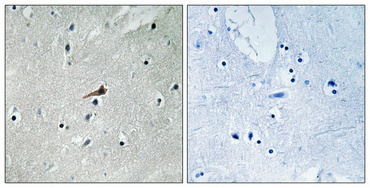- 靶点:
- PDGFR-β
- 简介:
- >>EGFR tyrosine kinase inhibitor resistance;>>MAPK signaling pathway;>>Ras signaling pathway;>>Rap1 signaling pathway;>>Calcium signaling pathway;>>Phospholipase D signaling pathway;>>PI3K-Akt signaling pathway;>>Focal adhesion;>>Gap junction;>>JAK-STAT signaling pathway;>>Regulation of actin cytoskeleton;>>Human papillomavirus infection;>>Pathways in cancer;>>MicroRNAs in cancer;>>Glioma;>>Prostate cancer;>>Melanoma;>>Central carbon metabolism in cancer;>>Choline metabolism in cancer
- 基因名称:
- PDGFRB
- 蛋白名称:
- Platelet-derived growth factor receptor beta
- Human Gene Id:
- 5159
- Human Swiss Prot No:
- P09619
- Mouse Gene Id:
- 18596
- Mouse Swiss Prot No:
- P05622
- Rat Gene Id:
- 24629
- Rat Swiss Prot No:
- Q05030
- 免疫原:
- The antiserum was produced against synthesized peptide derived from human PDGF Receptor beta. AA range:718-767
- 特异性:
- PDGFR-β Polyclonal Antibody detects endogenous levels of PDGFR-β protein.
- 组成:
- Liquid in PBS containing 50% glycerol, 0.5% BSA and 0.02% sodium azide.
- 来源:
- Polyclonal, Rabbit,IgG
- 稀释:
- WB 1:500 - 1:2000. IHC: 1:100-300 ELISA: 1:20000. IF 1:100-300 Not yet tested in other applications.
- 纯化工艺:
- The antibody was affinity-purified from rabbit antiserum by affinity-chromatography using epitope-specific immunogen.
- 浓度:
- 1 mg/ml
- 储存:
- -15°C to -25°C/1 year(Do not lower than -25°C)
- 其他名称:
- PDGFRB;PDGFR;PDGFR1;Platelet-derived growth factor receptor beta;PDGF-R-beta;PDGFR-beta;Beta platelet-derived growth factor receptor;Beta-type platelet-derived growth factor receptor;CD140 antigen-like family member B;Platelet-deri
- 实测条带:
- 135-180kD
- 背景:
- This gene encodes a cell surface tyrosine kinase receptor for members of the platelet-derived growth factor family. These growth factors are mitogens for cells of mesenchymal origin. The identity of the growth factor bound to a receptor monomer determines whether the functional receptor is a homodimer or a heterodimer, composed of both platelet-derived growth factor receptor alpha and beta polypeptides. This gene is flanked on chromosome 5 by the genes for granulocyte-macrophage colony-stimulating factor and macrophage-colony stimulating factor receptor; all three genes may be implicated in the 5-q syndrome. A translocation between chromosomes 5 and 12, that fuses this gene to that of the translocation, ETV6, leukemia gene, results in chronic myeloproliferative disorder with eosinophilia. [provided by RefSeq, Jul 2008],
- 功能:
- catalytic activity:ATP + a [protein]-L-tyrosine = ADP + a [protein]-L-tyrosine phosphate.,disease:A chromosomal aberration involving PDGFRB is a cause in many instances of chronic myeloproliferative disorder with eosinophilia (MPE) [MIM:131440]. Translocation t(5;12) with ETV6 on chromosome 12 creating an PDGFRB-ETV6 fusion protein.,disease:A chromosomal aberration involving PDGFRB is found in a form of chronic myelomonocytic leukemia (CMML). Translocation t(5;12)(q33;p13) with EVT6/TEL. It is characterized by abnormal clonal myeloid proliferation and by progression to acute myelogenous leukemia (AML).,disease:A chromosomal aberration involving PDGFRB may be a cause of acute myelogenous leukemia. Translocation t(5;14)(q33;q32) with TRIP11. The fusion protein may be involved in clonal evolution of leukemia and eosinophilia.,disease:A chromosomal aberration involving PDGFRB may be a cause
- 细胞定位:
- Cell membrane; Single-pass type I membrane protein. Cytoplasmic vesicle. Lysosome lumen. After ligand binding, the autophosphorylated receptor is ubiquitinated and internalized, leading to its degradation.
- 组织表达:
- Brain,Spleen,
Single cell transcriptional zonation of human psoriasis skin identifies an alternative immunoregulatory axis conducted by skin resident cells. Cell Death & Disease Cell Death Dis. 2021 May;12(5):1-13 IHC Human Skin
货号:YT3639
PDGF-mediated PI3K/AKT/β-catenin signaling regulates gap junctions in corpus cavernosum smooth muscle cells. EXPERIMENTAL CELL RESEARCH Exp Cell Res. 2018 Jan;362:252 WB Rat 1:1000 corpus cavernosum smooth muscle cells (CCSMCs)
货号:YT3639
PDGF-mediated PI3K/AKT/β-catenin signaling regulates gap junctions in corpus cavernosum smooth muscle cells. EXPERIMENTAL CELL RESEARCH Exp Cell Res. 2018 Jan;362:252 WB Rat 1:1000 corpus cavernosum smooth muscle cells (CCSMCs)
货号:YT3639
Non-viral gene therapy using RNA interference with PDGFR-α mediated epithelial-mesenchymal transformation for proliferative vitreoretinopathy Materials Today Bio Quankui Lin WB,IF Rabbit,Human ocular tissue ARPE-19 cell
货号:YT3639
- June 19-2018
- WESTERN IMMUNOBLOTTING PROTOCOL
- June 19-2018
- IMMUNOHISTOCHEMISTRY-PARAFFIN PROTOCOL
- June 19-2018
- IMMUNOFLUORESCENCE PROTOCOL
- September 08-2020
- FLOW-CYTOMEYRT-PROTOCOL
- May 20-2022
- Cell-Based ELISA│解您多样本WB检测之困扰
- July 13-2018
- CELL-BASED-ELISA-PROTOCOL-FOR-ACETYL-PROTEIN
- July 13-2018
- CELL-BASED-ELISA-PROTOCOL-FOR-PHOSPHO-PROTEIN
- July 13-2018
- Antibody-FAQs
- 产品图片
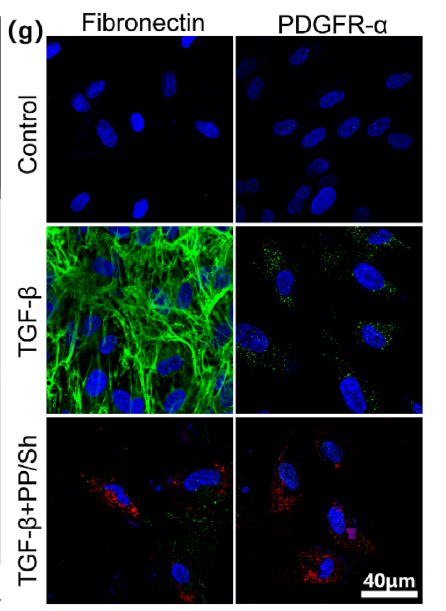
- Non-viral gene therapy using RNA interference with PDGFR-α mediated epithelial-mesenchymal transformation for proliferative vitreoretinopathy Materials Today Bio Quankui Lin WB,IF Rabbit,Human ocular tissue ARPE-19 cell
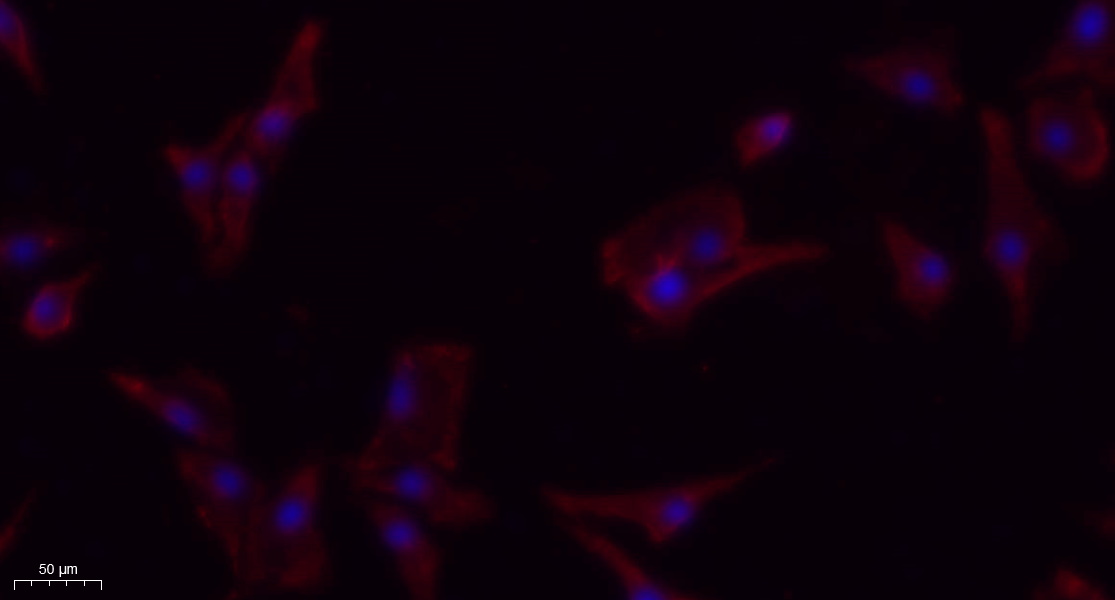
- Immunofluorescence analysis of A549. 1,primary Antibody(red) was diluted at 1:200(4°C overnight). 2, Goat Anti Rabbit IgG (H&L) - Alexa Fluor 594 Secondary antibody was diluted at 1:1000(room temperature, 50min).3, Picture B: DAPI(blue) 10min.
.png)
- Gao, Y., Yao, X., Zhai, Y. et al. Single cell transcriptional zonation of human psoriasis skin identifies an alternative immunoregulatory axis conducted by skin resident cells. Cell Death Dis 12, 450 (2021).
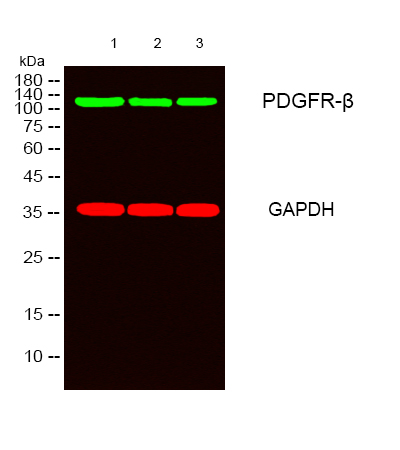
- Western blot analysis of lysates from 1) Hela, 2) K562, 3) KB cells, (Green) primary antibody was diluted at 1:1000, 4°over night, secondary antibody(cat:RS23920)was diluted at 1:10000, 37° 1hour. (Red) GAPDH Monoclonal Antibody(2B8) (cat:YM3029) antibody was diluted at 1:5000 as loading control, 4° over night,secondary antibody(cat:RS23710)was diluted at 1:10000, 37° 1hour.
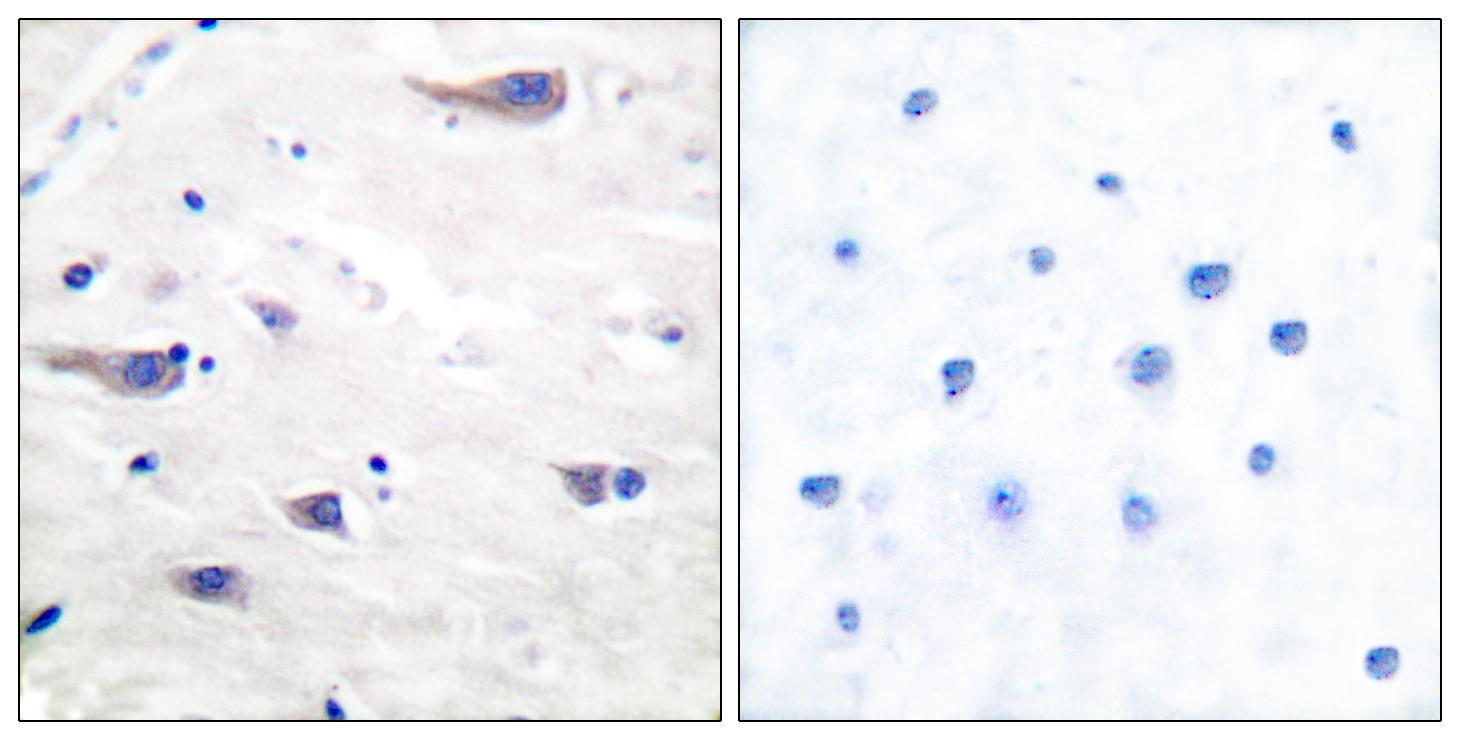
- Immunohistochemistry analysis of paraffin-embedded human brain tissue, using PDGF Receptor beta Antibody. The picture on the right is blocked with the synthesized peptide.
